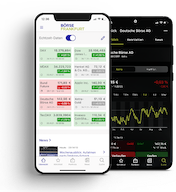Market sentiment: "Neutral before change of direction"

Despite the currently completely open outcome of the upcoming US presidential election, many investors have positioned themselves clearly.
Summary
The US election is an important event with an unclear outcome and consequences for the financial markets that are difficult to predict. Nevertheless, this has not prevented both private and institutional investors from expressing a clear opinion. Among the latter in particular, a clear polarization between bulls and bears has emerged, coupled with relatively low risk aversion. The bottom line is that Joachim Goldberg also sees a balance among the generally more bullish private investors, which makes a stronger upward or downward trend movement appear unlikely from a domestic perspective alone. This “initial spark” is probably reserved for long-term capital flows (from abroad).
30 October 2024. FRANKFURT (Goldberg & Goldberg). If you look at the DAX's performance since our last survey and the comparatively narrow trading range of around 1.6% that has accompanied it, you could almost get the impression that it is the calm before the storm. Although the DAX made another attempt towards an all-time high in the meantime, it faltered shortly before reaching this reference level, only to end the sentiment week unchanged. Even though important macroeconomic data on the US labor market and various quarterly figures from major companies are still to be published, the upcoming presidential election in the US is already casting its shadow. Incidentally, in the history of our sentiment surveys on the Wednesday before election day since 2004, there has never been any pessimism on balance among the institutional investors with a medium-term trading horizon that we have surveyed; not this time either.
Little optimism
This time, however, the effects of the election result on the DAX are seen by many stock market participants in different ways. This applies in particular to today's sentiment survey, which, however, measured by the Börse Frankfurt Sentiment Index, is unchanged from the previous week at +3. However, the polarization between bulls and bears has increased by 3 percentage points each. Interestingly, the result of today's sentiment survey is almost identical to that before the US election in 2020, but a far cry from the sometimes great optimism before the elections of 2004 to 2016.
There was significantly more movement in the sentiment among private investors, which had recently seemed static. The Börse Frankfurt Sentiment Index in this panel fell by 11 points compared to the previous week to a new level of +16. The bull camp has lost 6 percentage points. Presumably with a decent profit behind them, around four-fifths of the former optimists have gone straight to the bear side, i.e. turned their position 180°. Even if the absolute sentiment result still looks quite bullish, the relative view over three and six months shows that the sentiment among private investors can actually be rated as neutral.
... but also low risk aversion
At least the sentiment gap between private and institutional investors has narrowed with today's survey. It is noticeable that the proportion of neutral respondents in both panels is quite low - in the case of private investors, it accounts for only 16% of respondents. This is despite the fact that the presidential candidates Kamala Harris and Donald Trump are very close to each other in the polls, so that one might have expected more risk aversion. After all, the outcome of the election is seen in many quarters as pointing the way for future economic and foreign policy as well as the future of democracy in the USA.
Ultimately, the current sentiment and the associated positioning of institutional investors in particular is not enough to give the DAX a significant boost in one direction or another from a domestic perspective alone. This does not change when you consider that sentiment is even more positive in relative terms over three and six months than the absolute result of +3 in the sentiment index would suggest. The starting position for the DAX can therefore be classified as neutral in terms of sentiment. Any change in this situation is therefore reserved for long-term capital flows (including those from abroad).
By Joachim Goldberg
30 October, 2024, © Goldberg & Goldberg für boerse-frankfurt.de
Your opinion counts: Market expectations of investors

All interested investors are invited to take part. It only takes 15 seconds. You will receive an e-mail with a survey link every Tuesday. The results of the analysis will be sent to you by e-mail.
Sentiment-Index institutional investors

| Bullish | Bearish | Neutral | |
| Total | 41% | 38% | 21% |
| compared to last survey | +3% | +3% | -6% |
DAX (compared to last survey): 19.410 Punkte (unch. compared to last week)
Börse Frankfurt Sentiment-Index institutional investors: +3 points( unch. compared to last week)
Sentiment-Index private investors

| Bullish | Bearish | Neutral | |
| Total | 50% | 34% | 16% |
| ggü. letzter Erhebung | -6% | +5% | +1% |
DAX (change compared to last survey): 19.410 points (unch. compared to last week)
Börse Frankfurt Sentiment-Index private investors: 16 points (-11 points compared to last week)
About the Börse Frankfurt Sentiment-Index
The Börse Frankfurt Sentiment Index ranges between -100 (total pessimism) and +100 (total optimism), with the transition from positive to negative values marking the neutral line.
More articles from this columnist
| Time | Title |
|---|




